Why Butcher Block Is Our Favorite Kitchen Trend of 2023
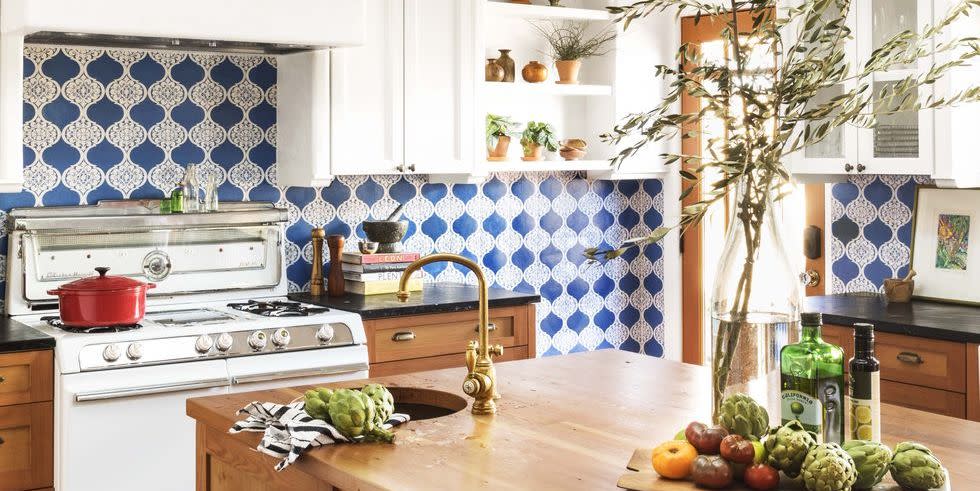
Walk into any restaurant or cafe kitchen and you're sure to find a few things they all have in common—the nutty smell of fresh butter, the sizzle of garlic hitting the pan...and butcher block countertops. While the former two items are beloved for their deliciousness (#butterislife), the latter is lauded for its functionality. Butcher block countertops are the unsung hero in many a workhorse kitchen, bringing with them a back-to-basics approach to design that will stand the test of time in your space for years to come. Not to mention, they're a design favorite—we've been seeing more and more of this laidback material in recent projects from our favorite decorators.
So if you're undergoing a kitchen makeover, there are countless reasons to consider this often-overlooked material for your countertops or island. Beyond their functional appeal, butcher block counters are budget-friendly, easy to care for, and a great way to bring natural textures to an otherwise industrial or generic space. Learn all there is to know about this pro-kitchen classic below—then decide for yourself if it's the right countertop material for you.
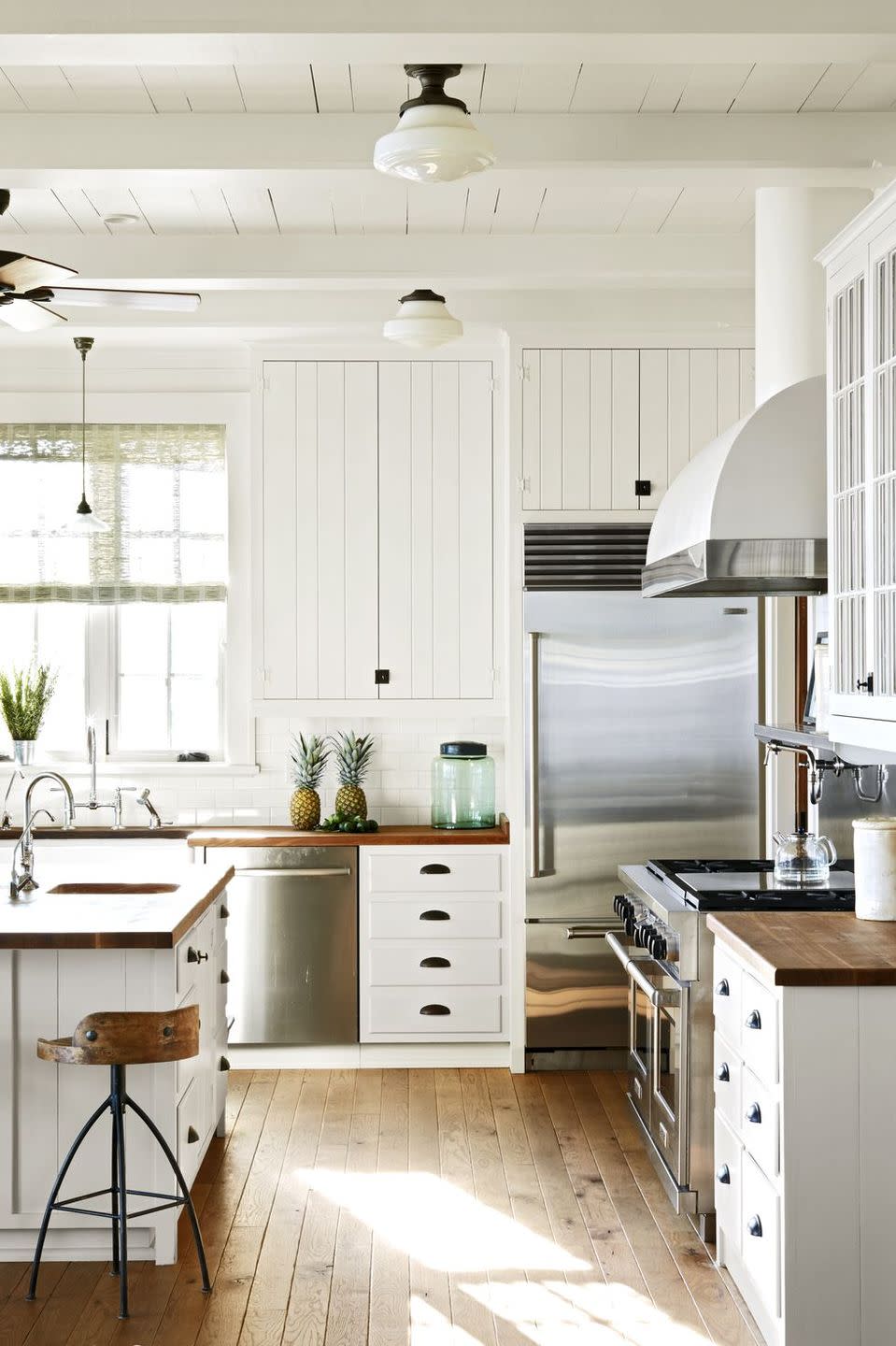
What is butcher block?
Butcher block countertops are made by gluing together thick, straight cuts of wood into a sturdy and durable worktop. As you may have guessed, these countertops got their descriptive name from their original use in butcheries, where they were commonly used as a spot to cut and prep meat.
Butcher block countertops are primarily constructed from maple wood, which is among the hardest varietals and has a defined grain—however, cherry, oak, and bamboo are all popular options, too. In general, you'll see three main different types of construction when it comes to butch block countertops. They include the following grain variations:
Edge Grain
Edge grain butcher block countertops are the most popular option, thanks to their strength and stability. They're constructed by lining up long pieces of wood on their sides so that their edges form the surface of the countertop. They're often less visually "busy" than other assembly options and are typically the most inexpensive, thanks to their straightforward construction.
Face Grain
Face grain butcher block countertops are constructed by assembling planks of wood side-by-side and face-up. While this style allows you to see the full grain of the wood and is typically considered to be the most beautiful, it's also the least durable and is therefore more like to be used for cutting boards rather than full countertops.
End Grain
The priciest pick of the bunch, end grain butcher block countertops are made from the end of wood planks, creating small little squares that come together in a checkerboard-like effect. While end grain countertops are the most durable, they're also the most intricate to assemble and therefore the most expensive. You're much more likely to find an end grain butcher block cutting board than you are a full countertop.
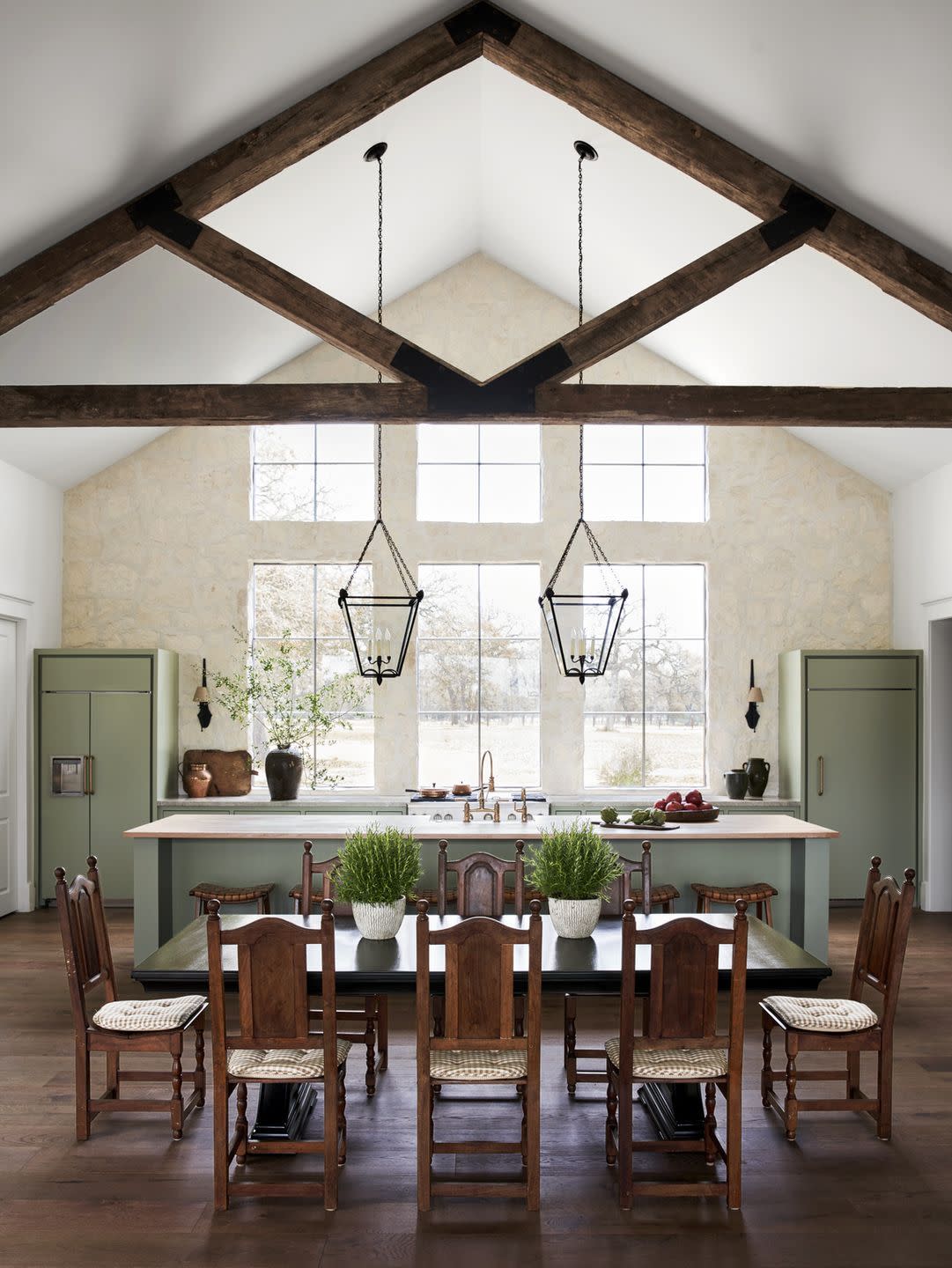
What is the difference between butcher block and wood countertops?
Though they're sometimes referred to interchangeably as wood countertops, butcher block countertops are indeed something different. While butcher block countertops are assembled from multiple cuts of wood, traditional wood countertops are made from full, solid slabs of hard, soft, or engineered wood. Wood countertops typically give a more polished, traditional look and are available in more hardwood species, including birch, walnut, teak, and hickory.
How much does a butcher block countertop cost?
If you're looking to save a bit of cash on your kitchen renovation, butcher block countertops are a great material to consider. They're considerably less pricey than many other countertop materials, including natural stones like marble and quartzite. If you're looking for a custom combination or need a unique countertop shape, you should expect to pay a bit more of a premium, around $80 to $100 per square foot. More standard options range from $25 to $65 per square foot, with some off-the-shelf versions costing even less.
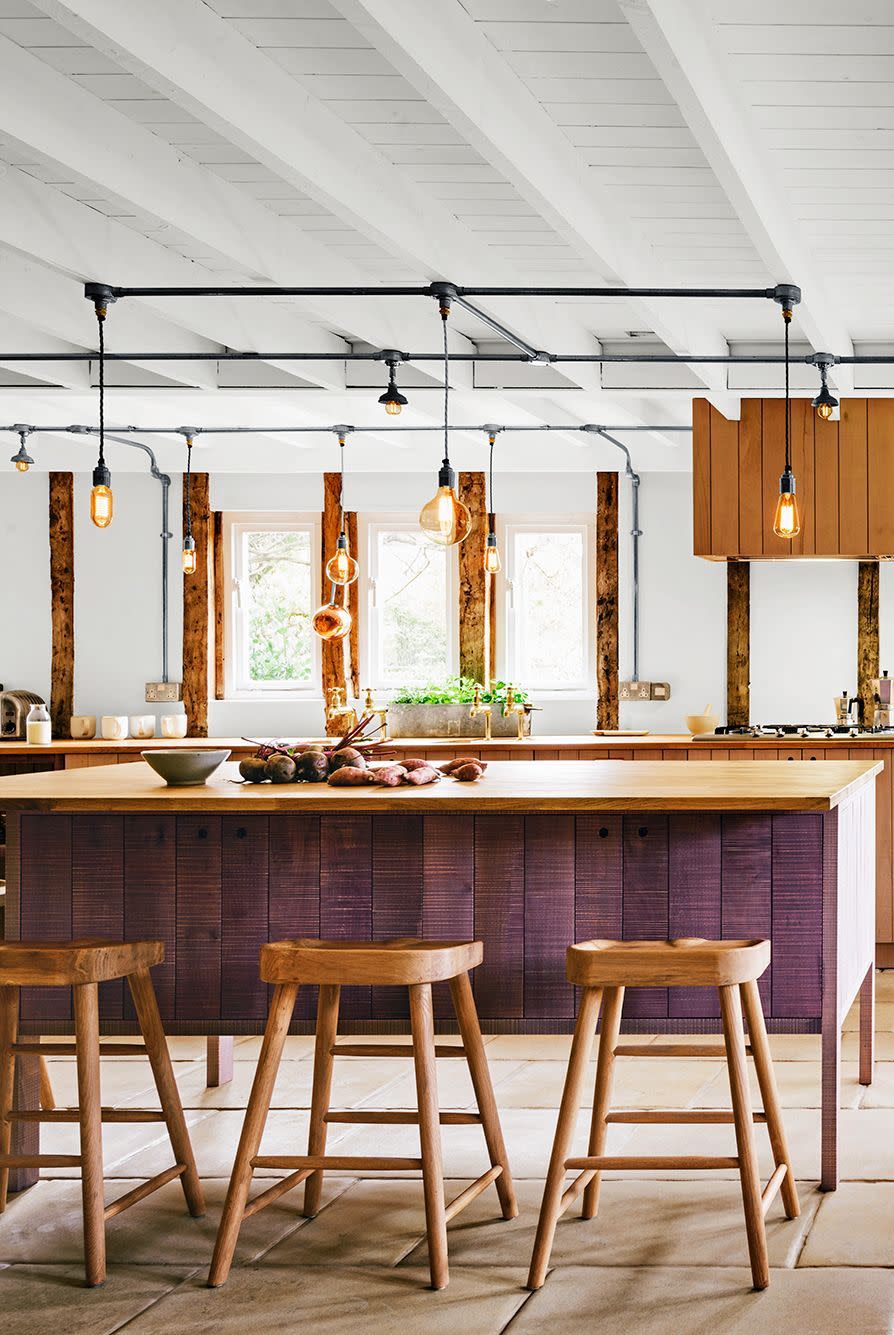
How durable are butcher block countertops?
Despite their roots as a slicing and dicing surface, it's best if you refrain from chopping directly on your butch block countertops. While doing so won't dull the blade of your knife (a plus!), it will still result in scratches or dings in the surface of the wood, which can make it easier for water or moisture to leech into the wood and cause lasting damage. The same rule applies to hot items, like pots or pans—placing them unprotected on the wood surface can leave lasting burn marks. In general, you'll want to treat your butcher block counters with the same care you'd apply to a quartz or granite surface.
How do you care for a butcher block counter?
Like many other natural countertop materials, butcher block will need a bit of TLC to keep it looking (and performing) its best. Upon installation, you'll want to oil your countertop with a food-safe oil like mineral oil or tung oil and continue to do so every six weeks or so (with average use). This adds much-needed moisture back into the wood, keeping it from cracking or dulling.
For everyday cleaning sessions, tend to your butcher block countertops with a bit of warm, soapy water and a cloth or sponge. You can also use various cleaning formulas on the surface, such as a wood-specific cleaner or a combination of vinegar and water.
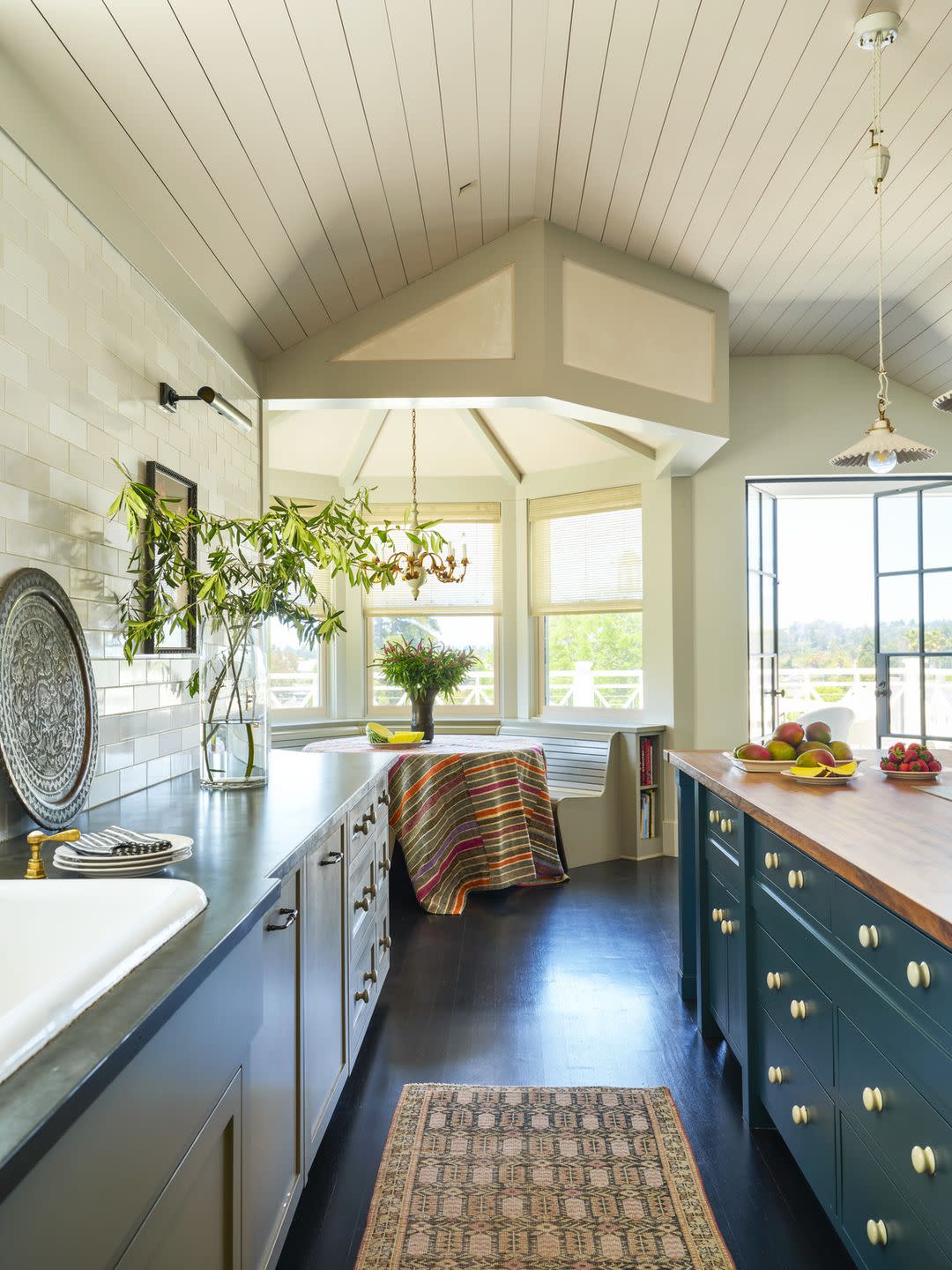
If you notice there are unsightly marks or wear and tear on your countertops, you can repair them fairly easily yourself. Before your next oiling session, take some time to sand away any scratches using 100-grit to 150-grit sandpaper, then reseal using a food-safe oil for a surface that looks good as new.
Butcher Block Countertops Pros and Cons
Pros
A great way to add natural texture and warmth to your kitchen.
Easy to repair and will last decades if maintained properly.
Easily coordinated with other elements of kitchen design, such as paint hues and hardware finishes.
Cons
Can be easily damaged by water or food stains if not sealed properly.
Will develop a patina over time and may show wear and tear from cutlery, dishes, and more.
Requires some maintenance.
Not heat or water-resistant.
Follow House Beautiful on Instagram.
You Might Also Like
